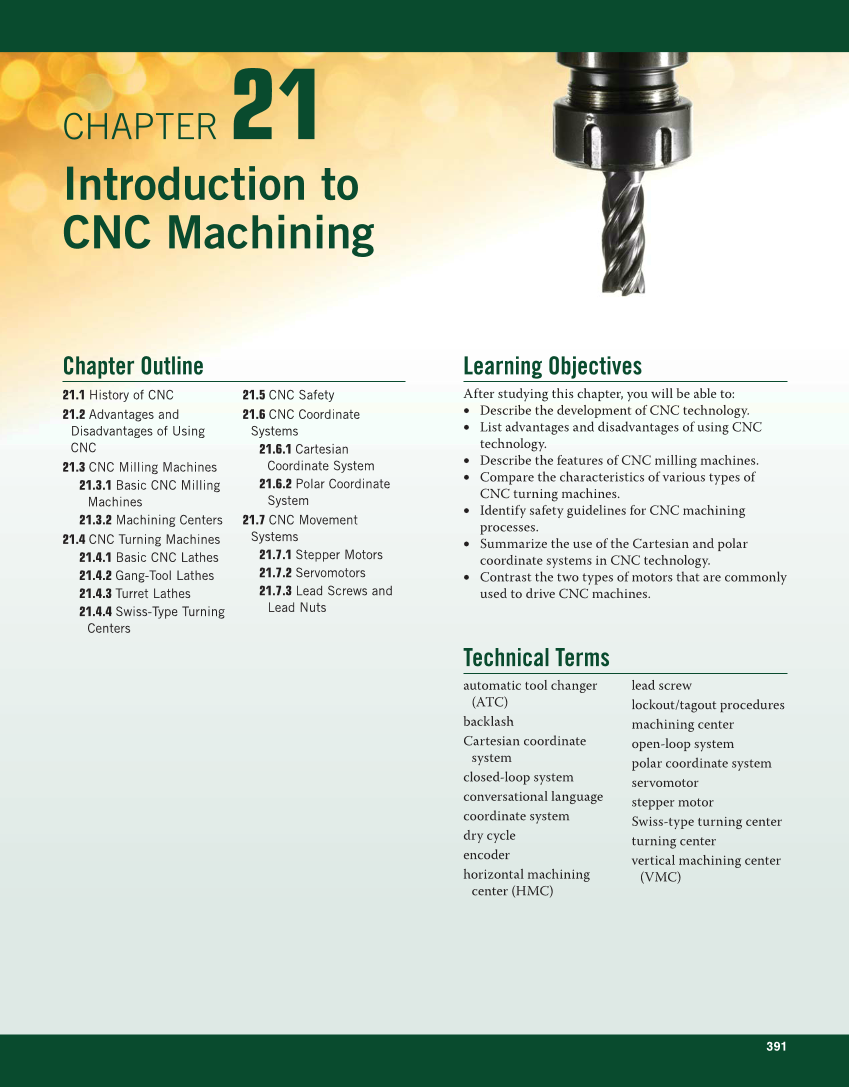391 CHAPTER 21 Chapter Outline 21.1 History of CNC 21.2 Advantages and Disadvantages of Using CNC 21.3 CNC Milling Machines 21.3.1 Basic CNC Milling Machines 21.3.2 Machining Centers 21.4 CNC Turning Machines 21.4.1 Basic CNC Lathes 21.4.2 Gang-Tool Lathes 21.4.3 Turret Lathes 21.4.4 Swiss-Type Turning Centers 21.5 CNC Safety 21.6 CNC Coordinate Systems 21.6.1 Cartesian Coordinate System 21.6.2 Polar Coordinate System 21.7 CNC Movement Systems 21.7.1 Stepper Motors 21.7.2 Servomotors 21.7.3 Lead Screws and Lead Nuts Learning Objectives After studying this chapter, you will be able to: • Describe the development of CNC technology. • List advantages and disadvantages of using CNC technology. • Describe the features of CNC milling machines. • Compare the characteristics of various types of CNC turning machines. • Identify safety guidelines for CNC machining processes. • Summarize the use of the Cartesian and polar coordinate systems in CNC technology. • Contrast the two types of motors that are commonly used to drive CNC machines. Technical Terms automatic tool changer (ATC) backlash Cartesian coordinate system closed-loop system conversational language coordinate system dry cycle encoder horizontal machining center (HMC) lead screw lockout/tagout procedures machining center open-loop system polar coordinate system servomotor stepper motor Swiss-type turning center turning center vertical machining center (VMC) Introduction to CNC Machining
